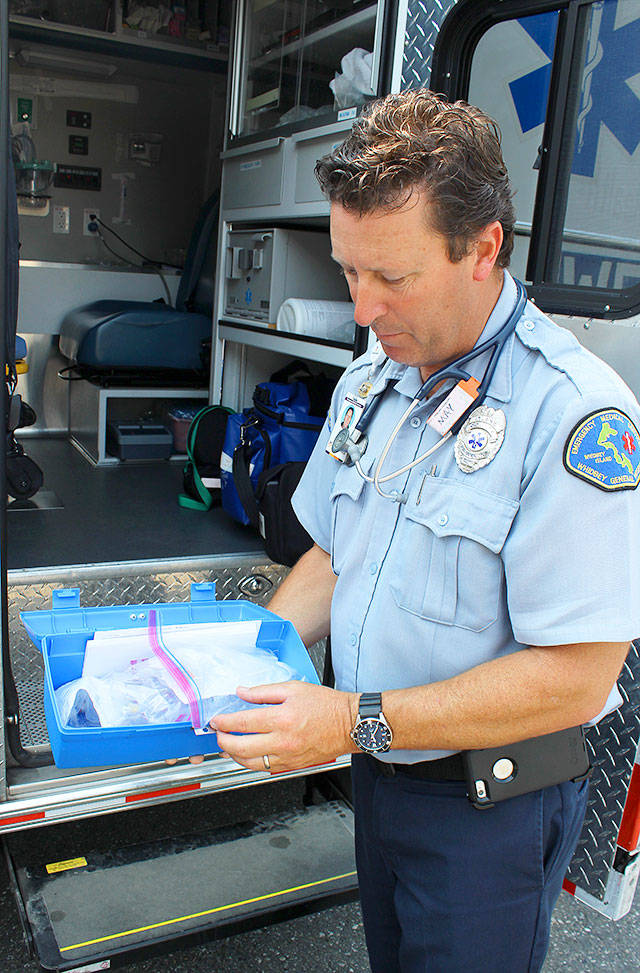WhidbeyHealth EMS has applied for a $1 million, two-year grant to create a community paramedic program aimed at better connecting rural residents to health and social needs and freeing up ambulances for true emergencies.
“This kind of program is being deployed around the country, including Snohomish County,” EMS Manager Roger Meyers said during a recent presentation to the Whidbey Island Public Health District Board of Commissioners.
“A lot of people call 911 with a need,” he said. “They might have no food, no heat or their medication has run out. We transport them to the hospital and then they’re sent home and given no solutions to their problems.”
Besides tying up ambulances and crews with non-medical calls, often these type of dispatches result in no financial reimbursements, Meyers said.
Reviewing the more than 8,000 calls received last year for Whidbey’s six ambulances, Meyers found 429 patients who had each called 911 more than five times. “They didn’t need medical care,” he said.
But they did need help, said paramedic Robert May.
“They’re frustrated. They’ve tried and tried and called various offices asking about services but never found the answers they needed,” he said. “So they call 911. They’re frustrated and I’m frustrated. What they need are resources and they need support connecting to those resources.”
Recently, the state of Washington made changes to codes governing emergency service calls that allow paramedics to go beyond their usual “treat and transport.” Now, they can “treat and release,” such as providing wound care, post-surgical checkups or hooking patients up with doctors via telemedicine without leaving their own homes.
Or a community paramedic could be referred by physicians or other ambulance drivers to repeat 911 callers who are open to discussing barriers affecting their health.
“We’re uniquely placed to be in the connectivity business,” May said. “People can’t assess services if they don’t know they exist. We need to connect the under-served population with the under-utilized programs.”
Meyers said the states of Minnesota and Wisconsin have become models for community paramedic programs with a motto of “filling the gaps together.”
According to a website explaining the Midwest states’ programs, community paramedics could help 75 million Americans living in rural areas, many of whom are elderly, immigrants and impoverished and must drive long distances to receive basic care.
A national standardized curriculum in community paramedic services trains first responders in public health, disease management, mental health, oral health, and prevention and wellness.
Meyers said the EMS system serving North, South and Central Whidbey is at the breaking point.
“Our system is stressed to the max,” he said. “We’re running over 8,000 calls a year.”
The number of miles driven by the system’s ambulances has doubled in the past 10 years, he said.
WhidbeyHealth CEO Geri Forbes is supportive of the idea, saying it fits into the changing role of health care going from “high tech to high touch.”
Meyers said his grant is one of dozens being considered by the state that’s allocating some $15 million to community paramedic programs in five counties. Funding should be known by Aug. 11.



